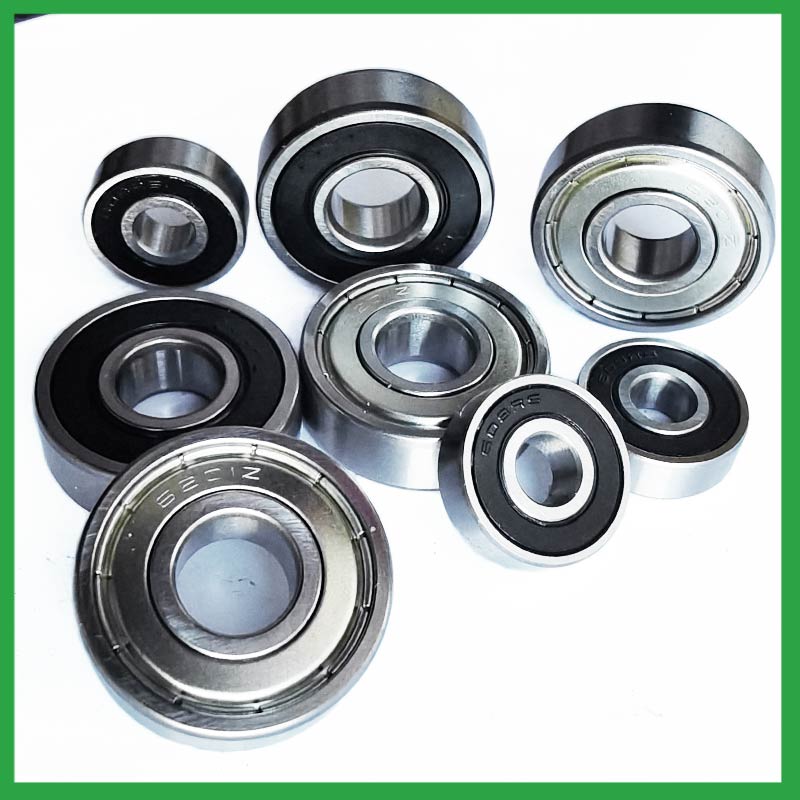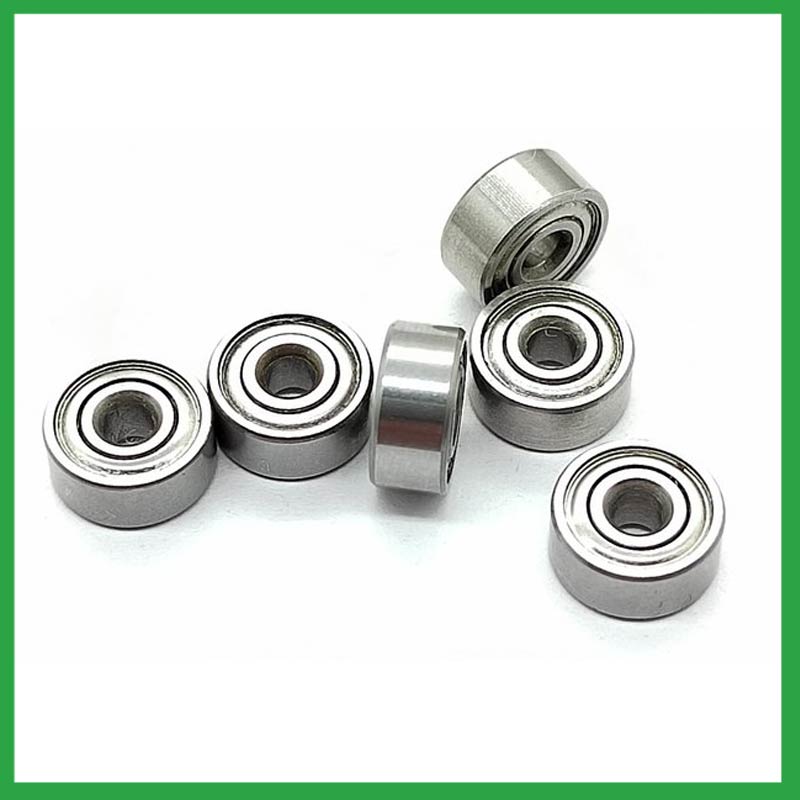PRODUCTS
CONTACT US
Ningbo Nide International Co., Ltd.
一一
· Contact person:Jack Zeng
· Mob/Whatspp/WeChat:0086-13738869026
· Email:emarketing@nide-group.com;marketing4@nide-group.com
· Add:No. 169, Wohushan Road, Daqi Subdistrict, Beilun District, Ningbo, China

Nide team could manufacture ball bearing as per customer’s drawing and samples.
If customer only has samples, we could also design drawing fo r our customer.
We also provide customized service.
Our ball bearing is widely applied the different industrials.
Ningbo Haishu Nide International is located in Ningbo, Zhejiang Province. Established in 2010, it is a rapidly growing international enterprise. With advanced industrial hubs, complete supply chains, and convenient transportation advantages, combined with a professional team with rich experience in motor manufacturing, we specialize in exporting various bearings to various parts of the world. Our factory has advanced production equipment and testing instruments to ensure that all goods are perfect when received by our customers.
We adhere to strict quality control principles and excellent service. Our main products include fan,insulation paper,carbon brush,ball bearing,commutator,magnet, etc. Our products are widely used in fields such as single and three phase induction motor,air condition motor,compress motor,electric automotive motor,water pump motor,washing machine motor,fan motor,BLDC motor. With the rapid development of the company, we have gained a good reputation and established long-term business relationships with many customers. So far, Nide has provided products to customers in over 50 countries.

| Parameter | Information |
| Product Name | thomas edison ball bearing |
| Brand Name | Nide |
| Place of Origin | Ningbo,Zhejiang,China |
| Type | Ball |
| Material | ceramics, etc. |
| Sample | Avaible |
| Warranty | 3months-1year |
| Lubrication | Dry/ Oil |
| Application | fan electric motor,various industrial equipment, etc. |
| Port | Ningbo/Shanghai |
| Size(mm) | customize |
| Export Country | Argentina,Brazil,South Korea,Tunisia,Saint Kitts and Nevis,Belarus,Austria...etc |
| Export region | Europe,Oceania,Africa... |
| Certification | ISO 9001 Certification,ISO9001:2015 certificate,CE-stator coil winding inserting machine,etc |
| Precision Rating | as per customer's requirement |
| Feature | High speed,Simple structure...etc |
| Packaging Details | Suitable for sea transportation |
| Color | white+customized |
| Seals Type | Rubber seals |
| Service | Prompt Delivery |
| Supply Ability | 100000-500000 Piece/Pieces per Month |
| Lead time (days) | 15-20 (To be negotiated) |
Please note: The above table data is for reference only. For specific information, please contact us.
The precision range of thomas edison ball bearing is from ABEC7 to ABEC9, with a particle size of 0.3 μ m. Among them, ABEC9's ball bearings have the best precision range and are widely used in the electronics industry, precision measurement industry, and so on.
Before use, the model, size, and design of the ball bearing should be confirmed to ensure suitable application;
During installation, the installation load of the ball bearing should be minimized as much as possible to avoid unnecessary damage;
The bearing shaft and the bearing frame should be stable at the same time to avoid excessive tension.
Ball bearings have many advantages, making them highly competitive in the market.
Firstly, they are very durable and have good wear performance, making their service life longer than many other types of bearings.
Secondly, they are easy to install and can provide low friction performance in various applications.
Thirdly, they require a relatively low level of maintenance, making them cost-effective.
In addition, compared to many other types of bearings, their purchase cost is relatively low, making them an economical choice.




thomas edison ball bearing---FAQs Guide
2.How do manufacturers address concerns related to bearing noise and vibration in sensitive equipment?
3.What are the considerations for choosing between open, shielded, or sealed thomas edison ball bearing in specific applications?
4.What is a ball bearing?
5.Are there miniature thomas edison ball bearing designed for use in precision instruments and small-scale mechanisms?
6.Can thomas edison ball bearing be used in vacuum or cleanroom environments, and what measures are taken to prevent outgassing or contamination?
7.What are the considerations for selecting sealed or shielded thomas edison ball bearing to protect against contamination and retain lubrication?
8.How do thomas edison ball bearing provide smooth and controlled motion in various mechanical systems, such as conveyor belts or automobiles?
9.Are there hybrid thomas edison ball bearing that combine steel rings with ceramic balls to optimize performance in demanding applications?
10.What are the common materials used in thomas edison ball bearing manufacturing?
11.How do cage materials and designs impact thomas edison ball bearing performance and stability?
12.How do manufacturers ensure the quality and reliability of thomas edison ball bearing through material selection and precision machining?
13.About thomas edison ball bearing,Can I add my own logo?
1.How do preload adjustments in thomas edison ball bearing affect their performance and suitability for high-precision tasks?
Benefits of Preloading a Bearing
Optimizes the ball spin to roll ratio.
Increases the rigidity of an application.
Protects from excessive ball skidding.
Decreases application vibration and sliding friction.
High running accuracy (even if load conditions keep changing)
Increases bearing load capacity.
2.How do manufacturers address concerns related to bearing noise and vibration in sensitive equipment?
From a thomas edison ball bearing manufacturing perspective, a low noise or vibration rating is achieved by paying attention to the surface finish of the raceways and balls, their roundness, and selecting the correct cage design. Finely filtered low noise greases can also be used to reduce vibrations.

3.What are the considerations for choosing between open, shielded, or sealed thomas edison ball bearing in specific applications?
While sealed bearings offer superior protection and maintenance advantages, shielded thomas edison ball bearing can be more suitable in situations where minimal friction and operating temperature are crucial. It's essential to assess the operational environment and demands before making a selection.
4.What is a ball bearing?
A ball bearing is a type of rolling-element bearing that uses balls to maintain the separation between the bearing races.
The purpose of a ball bearing is to reduce rotational friction and support radial and axial loads. It achieves this by using at least two races to contain the balls and transmit the loads through the balls. In most applications, one race is stationary and the other is attached to the rotating assembly (e.g., a hub or shaft). As one of the bearing races rotates it causes the balls to rotate as well. Because the balls are rolling they have a much lower coefficient of friction than if two flat surfaces were sliding against each other.
Ball bearings tend to have lower load capacity for their size than other kinds of rolling-element bearings due to the smaller contact area between the balls and races. However, they can tolerate some misalignment of the inner and outer races.

5.Are there miniature thomas edison ball bearing designed for use in precision instruments and small-scale mechanisms?
Miniature bearings, despite their small size, play a significant role in various industries and applications. These compact powerhouses, typically measuring less than one inch in outer diameter, offer exceptional precision, durability, and reliability. Miniature bearings find extensive use in precision instruments and robotics.
6.Can thomas edison ball bearing be used in vacuum or cleanroom environments, and what measures are taken to prevent outgassing or contamination?
Bearings specify stainless steel for vacuum or cleanroom applications as stainless steels used for the rings, balls and retainer exhibit low outgassing. They usually supply open or shielded stainless steel bearings as vacuum bearings as these will outgas less than a nitrile rubber sealed bearing.

7.What are the considerations for selecting sealed or shielded thomas edison ball bearing to protect against contamination and retain lubrication?
First, the environment in which your thomas edison ball bearing operate in can help you identify potential contaminants, allowing you to select your shields or seals accordingly. For example, shielded bearings have a gap that can allow finer contaminants or water from washdown applications to enter the bearing and get into the raceways.The challenge for sealing bearings is to seal the bearing by protecting the bearing from contaminants and running efficiencies.
8.How do thomas edison ball bearing provide smooth and controlled motion in various mechanical systems, such as conveyor belts or automobiles?
In essence, thomas edison ball bearing operate on the principle that it's far more efficient to roll over surfaces than to slide, thereby significantly reducing friction and facilitating smooth movement of machinery parts.

9.Are there hybrid thomas edison ball bearing that combine steel rings with ceramic balls to optimize performance in demanding applications?
Hybrid Ceramic thomas edison ball bearing. Ceramic ball bearings (also known as hybrid bearings) are the one component that'll easily optimize the performance of your application. Hybrid bearings have ceramic (silicon nitride, Si3N4) balls and 52100 bearing steel rings.
10.What are the common materials used in thomas edison ball bearing manufacturing?
Most thomas edison ball bearing are made of a type of steel known as high carbon chromium steel, often called chrome steel. This is used for reasons of cost and durability. Bearings are also made from other materials such as stainless steel, ceramics and plastic.

11.How do cage materials and designs impact thomas edison ball bearing performance and stability?
As the core component of rotating machinery, the performance and reliability of high-precision thomas edison ball bearing directly affect the overall performance and life of the machine and instrument . The increase of the rotational speed will aggravate the collision and friction of the cage, which will lead to the decrease of the rotational stability of the cage. The unstable movement of the cage could in turn lead to more severe collision and wear, thus reducing the life and reliability or even the destruction of the bearing.
Therefore, it is very necessary to study the cage stability to guarantee the stable operation of bearings. However, the dynamic characteristics of the cage is very complex. Parameters such as load, rotational speed and lubrication may affect its kinematic and tribological conditions, which leads to the change of its motion behavior.
12.How do manufacturers ensure the quality and reliability of thomas edison ball bearing through material selection and precision machining?
High-precision measuring instruments, such as micrometers and gauges, are used to check the dimensions of the rings and balls to ensure they meet tight tolerances. Surface Finish Inspection: Surface finish is assessed using profilometers to ensure the required smoothness and low friction characteristics.

13.About thomas edison ball bearing,Can I add my own logo?
Yes, you can add your logo on bearings and packing box. We supply OEM SERVICE including bearing's size, logo, packing, etc.

